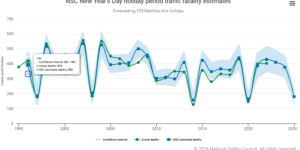 With global M&A on the upswing in multiple industries, Mercer says it has identified a major risk on the rise: people who work for the companies involved in combining operations.
With global M&A on the upswing in multiple industries, Mercer says it has identified a major risk on the rise: people who work for the companies involved in combining operations.
“More than ever, the challenge of managing talent—especially in the face of organizational transition—is what is most concerning M&A professionals,” Mercer noted in its new report, “People Risks in M&A Transactions.”
Why is this a new risk? Mercer said it stems from individuals’ inability to manage uncertainty and embrace change when M&A deals take place, which “can lead to declining organizational performance and loss of transaction value.”
Mercer warns that these are risks that need to be tackled.
“Buyers and sellers must manage and mitigate people-related risks in order to preserve key customer relationships and maintain productivity,” the Mercer report noted.
Mercer said execs behind M&A deals must be aware of specific people-related risks, including:
- Strategic risks. According to Mercer, people risks in this category stem from “misalignment between the people strategy and the business strategy.” A risk in this area could stem from employees not adapting their behavior to support the new, combined business.
- Financial risks. Employee-related financial risks that come out during due diligence can often be crucial to a deal, and Mercer said they must be factored into the business valuation. Some of the biggest financial risks in this area can include benefit pension liabilities, retiree medical program liabilities, the U.S. Affordable Care Act, compensation and benefit compliance. Other people-related financial risks range from unwanted turnover, loss of productivity and engagement.
- Operational risks. Post-merger goals typically entail an operating system that can help the buyer “differentiate itself and retain the best talent while flawlessly executing on the basics,” such as payroll, benefits administration, on-boarding and compensation management.”
To minimize these risks, Mercer has different recommendations for buyers and sellers.
On the buyer side, Mercer said companies should spend time assessing the leadership team and key employee capabilities, such as how they execute strategy, govern, lead people, drive culture change and deliver business results.
As well, companies should also develop effective retention strategies; make sure they have a clear plan to address changes in management and also culture and communications; evaluate human resource needs and structure; develop a global view to effectively manage benefits; and use incentives such as goal targets, base and bonus pay and other reward programs to attract and keep the right talent.
On the seller side, Mercer said companies should consider a retention plan and identify critical employee groups; leverage experienced sell-side advisors and separation specialists; consider providing a sensible, reasonably priced agreement for employees that can minimize reputational risk, cover costs and help “create an orderly exit; and document a clear talent management/staffing plan.”
Mercer drew its findings from survey responses from 323 M&A professionals on the buyer and seller side, plus 78 interviews with corporate and private equity clients, investment bankers and M&A advisors between August and November 2015, and an analysis of nearly 450 M&A transactions.
Source: Mercer





















 AM Best Revises Outlook for U.S. Personal Lines Insurance Segment to ‘Stable’
AM Best Revises Outlook for U.S. Personal Lines Insurance Segment to ‘Stable’  2025 Underwriting Profit and ‘Shop-a-Palooza’ Predicted for Auto Insurance
2025 Underwriting Profit and ‘Shop-a-Palooza’ Predicted for Auto Insurance  Study: Widening Gap Between Cyber Attack Causes, Public Perception
Study: Widening Gap Between Cyber Attack Causes, Public Perception  Property and Casualty Insurance Trends for 2025
Property and Casualty Insurance Trends for 2025 





